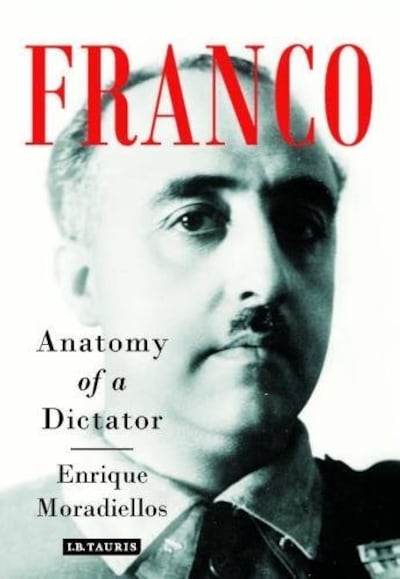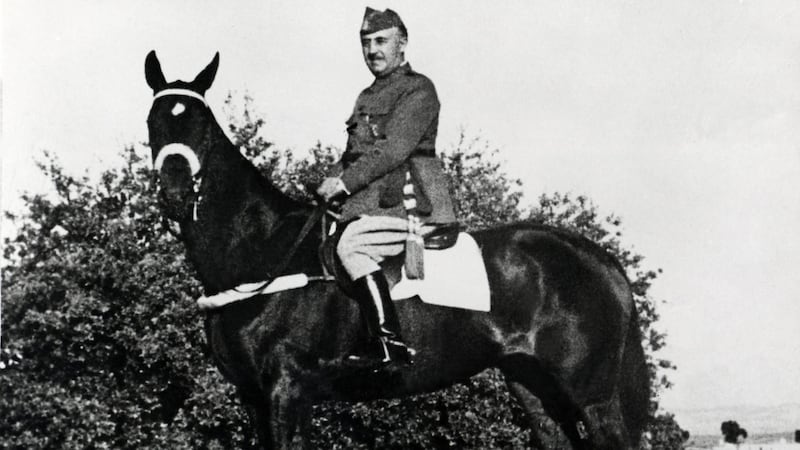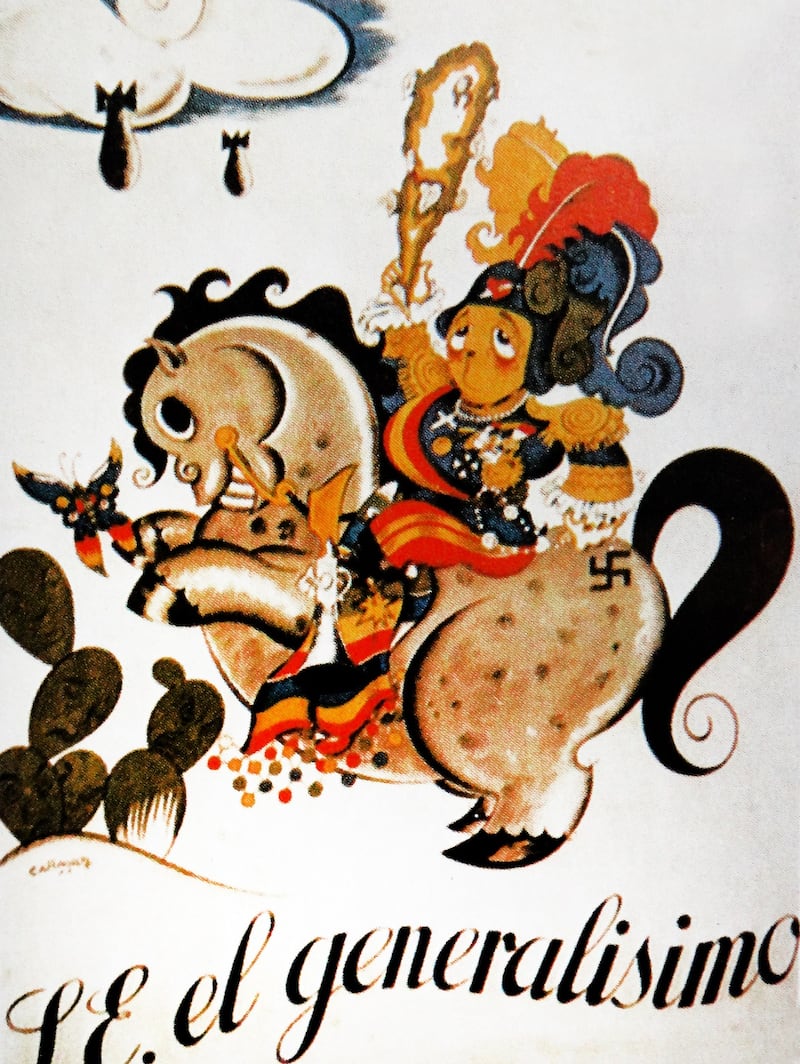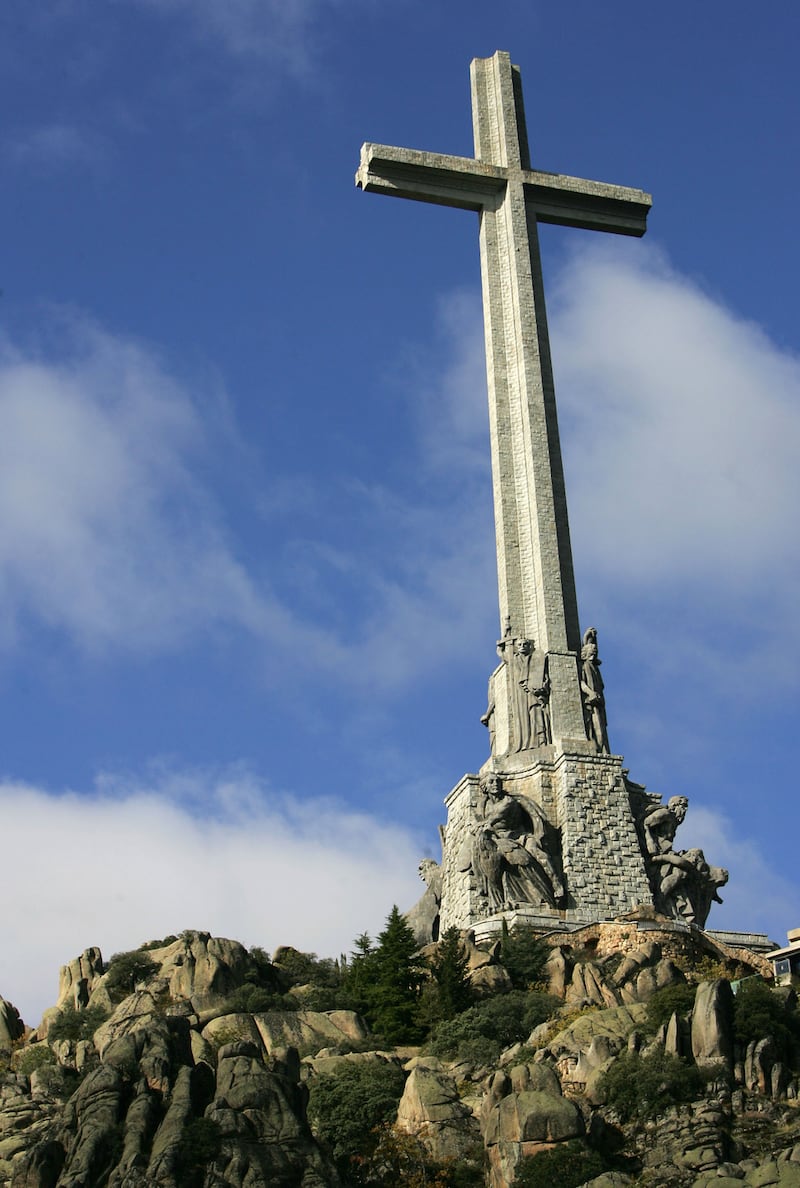
A little over 40 years ago, on the 20th November 1975, General Francisco Franco died of natural causes in Madrid, just as he was about to celebrate his 83rd birthday. By that time he had been for almost 40 years, from October 1st, 1936, the head of a dictatorial regime with the title of ‘Caudillo of Spain by the Grace of God’.
The word “Caudillo” (Leader) was not mere flattery, quite the contrary. It was the legal formula to define the supreme political authority and main institutional office he held during his entire life as a dictator. His “exaltation” to the post took place in October 1936 in the midst of a bloody civil war, when his rebellious comrades in arms agreed to his appointment as “Generalissimo of the national forces of land, sea and air” (a strategic military role) and “Head of the Government of the Spanish State” (a political-administrative function), with the addition of the full personal assumption of “all the powers of the New State”. Some months afterwards, he increased his power bases by becoming Homo missus a Deo (saviour sent by Divine Providence) and National Head of the Falange (the single official party), a religious and civilian legitimation of a Caudillo who “answers only to God and History”.
To sum up, in his capacity as Caudillo, Franco concentrated expressly plenitudo potestatis and exercised the highest State authority, combining executive, legislative, judicial, in short sovereign and constituent functions without discrimination and at the same time, for his lifetime and without possibility of removal.
Franco was born in the Galician coastal town of El Ferrol on December 4th, 1892, into the bosom of a lower middle class family with a long tradition of naval service. The Colonial Disaster of 1898 reduced the Spanish Armada to a minimum, forcing Franco to search for a post in the Infantry Army, spending more than 10 years in the heat of the bloody war waged in north Morocco. There he adopted a good part of the ideological baggage of the “Africanist” military of that time. Above all, he endorsed a strong Spanish nationalism, nostalgic for past imperial glories, suspicious of the outside world that had remained impassive to the uneven confrontation with the American colossus in 1898. Complimentary to this nationalism was a militaristic view of political life and public order that saw the army as a praetorian institution virtually autonomous of civil power and superior to it by its status as the “backbone of Spain”.

During the dictatorship of General Primo de Rivera, Franco was an enthusiastic supporter of the military regime, which rewarded him with the appointment as director of the General Military Academy in 1928. The arrival of the Second Republic in 1931 was a shock for Franco, who adopted a critical but cautious attitude towards the Republican-Socialist Government of 1931-1933. But he welcomed the victory of a combination of conservatives and a new Catholic mass party in the general elections of 1933. The new cabinet tasked him to crush the general strike and insurrection called by the socialist movement and the Catalan nationalist authorities in October 1934, with great success. After the tight victory of the left Popular Front coalition in the general elections of February 1936, Franco took a leading part in a military conspiracy to overthrow the new government by force.
Once the military uprising began in July 1936, Franco managed a meteoric rise to become the Supreme Commander of the revolt by virtue of his success in the fighting front and in securing the vital aid of Hitler and Mussolini for the revolt. Total victory in April 1939 left the way clear for the consolidation of what already was without doubt the comprehensive personal dictatorship of Franco himself, “The Caudillo”.
Francoism, as a political regime, was configured during a brutal civil war as a military dictatorship with a strong man at its head, such as those that existed then in other parts of Europe following the end of the Great War of 1914-1918. However, the Franco regime was never a mere Praetorian military dictatorship, even though it had its origins in the army and even if if the army was always the key pillar of the institutional political system.

On the contrary, Franco demonstrated his intention to overcome this category of mere military dictator to assume other sources of legitimacy. His efforts to restore to the Catholic Church all its privileges lost during the Republic earned him the gratitude of the episcopate, which contributed to his individual political rise. The conversion of the war effort into a “crusade for God and for Spain” was thus completed with the conversion of Franco into a soldier of God to lead the defence of the Catholic nation threatened by Communist atheism.
With such religious sanction of huge internal value, Franco forced the unification into a single party of all the political forces of the Right than supported the war against the reformism of the Republic and the spectre of social revolution. Thus, Falange was created as a “State Party” to organise his followers and to control civil society: the third pillar, after the army and the Church, of the institutional framework of Francoism.
The dictatorship led by the Caudillo survived the end of the second World War by virtue of the Cold War only to undergo a crucial transformation by 1959, with the adoption of the economic measures of the Plan de Estabilización. This represented the end of the first stage of Francoism (characterised still by the effects of the civil war, with its sequels of repression, misery, autarky and isolation) and the start of a second phase (defined by rapid economic development, profound social change, incipient material wellbeing and international openness).

Thus, paradoxically, the political regime that had interrupted for 20 years the process of economic and social modernisation initiated in Spain at the end of the 19th century, became its new advocate. Very soon, that increasing dysfunction between static political structures and dynamic socio-economic realities would create serious internal tensions in the country. Economic development would not only give new strength to the Franco regime in the short term, but would also generate deeply discordant social and cultural conditions within an anachronistic political system, unprepared for its own socio-economic success.
The perceptible physical decline of Franco since 1970 changed the fearsome dictator of previous times into a trembling old man, officiating as a symbolic and strict father figure of a Spain unrecognisable to his generation and each time increasingly more troubled. In his final years, Spain lived under total uncertainty and provisionality, with a weakened octogenarian head of state recovering from a serious illness and undergoing constant medical attention. The Franco regime was so associated with its founder that it was impossible to prolong its existence beyond the death of the Caudillo in November 1975.


From then on, the crucial political dilemma would be to restore democracy either by reform from within under the auspices of post-Franco elites led by King Juan Carlos or by the total breach with the regime favoured by opposition forces. In the end, and largely due to the omnipresent memory of the civil war and the tacit will not to repeat it, the process of political transition contained elements of both: an agreed and gradual reform that would lead in the end to a break in form and substance with the previous regime. In fact, the speed of this transitional process is an irrefutable proof of the marked anachronism of the Franco regime. This also offers an understanding of the rapid cloak of silence and voluntary forgetfulness surrounding the figure of the Caudillo in the years after his death, an integral part of the peculiar so-called “Pacto del Olvido” that made possible the peaceful transition and democratic consolidation.
Today Franco represents the name of an uncomfortable spectre from the past. Among other things, because part of Spanish political culture may have its origin in the historic times he presided over: the obsession with unanimity in political decisions, the tendency to demonise conflict, the inclination to identify government with nation, the liking for charismatic leadership, the complacency towards corruption and venality, etc. A recent humorous vignette by cartoonist Max in El País, on March 28th, 2015, hit the nail on the head with a succinct dialogue between a young man and a smart-ass know-it-all. The first asks: "Master, what remains of Francoism?" The second responds: "Do you see this sprinkling of gray dust everywhere? It's dandruff and it is an attitude."
Enrique Moradiellos is author of Franco: Anatomy of a Dictator (IB Tauris)











